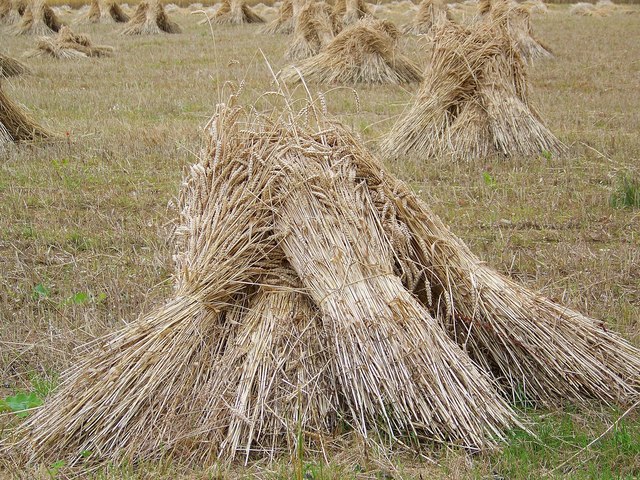[Image by Trish Steel, CC BY-SA 2.0, https://commons.wikimedia.org/w/index.php?curid=13576912]
Wikipedia offers an extensive explanation of the purpose of stooks. Essentially, the stacking of wheat sheaves (an armful of cut wheat stalks with the grain intact on top) so that the grain heads will dry, off the ground, is an important component of the annual harvest protocol.
The stacked stooks offer significant protection from vermin like rats and mice, who cannot easily reach the grain.
Drying of the wheat depends, of course, on the weather. If the wheat harvest is overdue, the grain will be drier on the intact stem than if it’s harvested at its optimum point of ripeness. A field of stooks could be collected conveniently with a horse and wagon, if they were part of the farm’s capacity, but human labour and transport on a farmer’s back would be necessary if they were not.

Leave a Reply